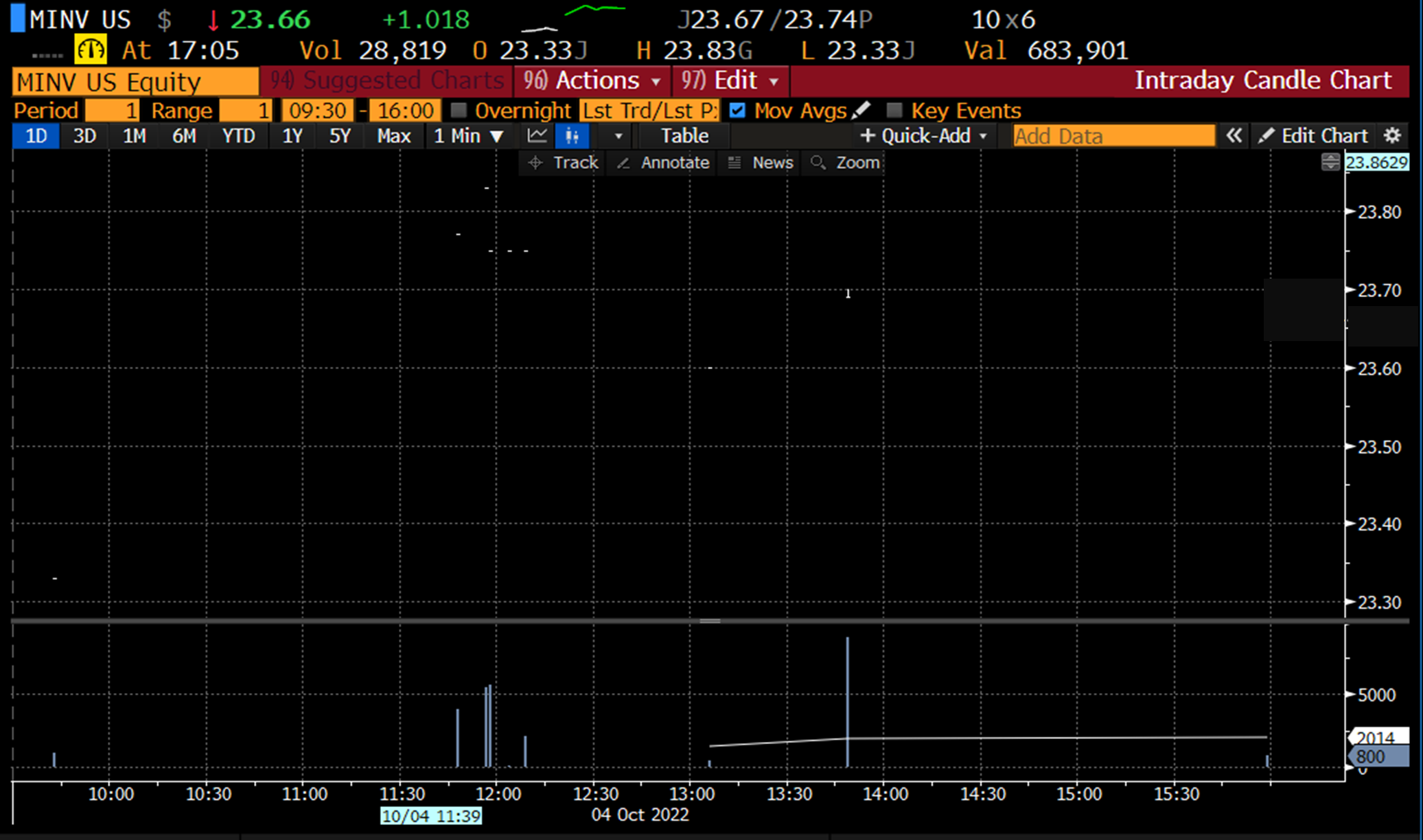Don’t Sweat the Small Trades
Learn why ETF investors shouldn’t necessarily worry about trading volumes.
When working with investors on newly issued ETFs, capital markets professionals talk a lot about underlying liquidity as the best way to evaluate baseline liquidity for ETFs. That average daily volume (ADV) is a historical metric and doesn’t represent the liquidity available when you work with platform trading desks and ETF liquidity providers for larger ‘block’ trades.
But what about smaller trades? Whether making an initial investment or adding to larger positions, investors shouldn’t necessarily worry about smaller trades executed electronically on an exchange. Although ADV may be low and liquidity may not appear to be present, when implemented correctly, these small trades should be no sweat.
Let’s look at Matthews Asia Innovators Active ETF (MINV) as an example. On October 4, 2022, MINV, a new ETF just under 3 months since launch had assets under management of approximately $4.5mm and an ADV of approximately2,000 shares per day. On that day, an investor traded 28,400 shares throughout the day (14x the ADV), all electronically on-screen, in lot sizes ranging from 100-3,000 shares, as seen in Figure 1. Many of the trades printed inside the screen offer and without impacting the price as can be seen by the intraday graph in Figure 2.
When investors choose, or need to trade on exchange, the key is to use “limit orders” at, or just above, the current on-screen offer price. A limit order ensures the investor pays no more than the limit price, but it’s possible the trade can receive execution inside, or better than, the limit price. Although the liquidity at the time of order entry may not seem available, limit orders allow market makers to provide more shares when demand is presented.
Figure 1: Bloomberg 10/4/22

Source: Bloomberg
Figure 2: Bloomberg 10/4/22

Source: Bloomberg
*Dots represent shares traded with minimal-to-no price impact.
